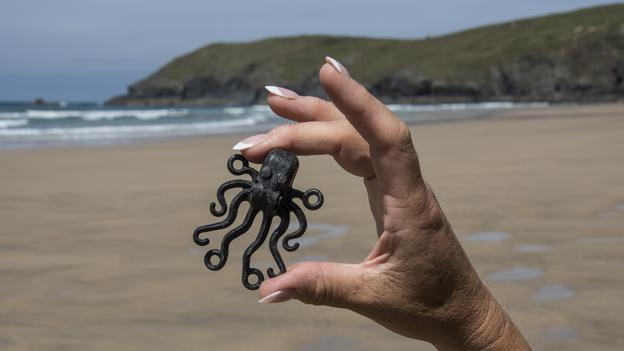Lego lost at sea exhibition at Royal Cornwall Museum
- Published

More of the rare and "sought after" green Lego dragons have washed up in recent years
Pieces of Lego are hauled up every week by fishermen off Cornwall, more than 25 years after a huge cargo ship spill.
More than five million Lego pieces were lost from the Tokio Express off Land's End in 1997, when a freak wave knocked 62 containers into the sea.
Pieces have been washing up along Cornish beaches ever since, and have been found as far away as the Channel Islands, Ireland, Holland and Denmark.
The tale is being told at an exhibition at the Royal Cornwall Museum.
The Lego Group said the spill was an "unfortunate accident".
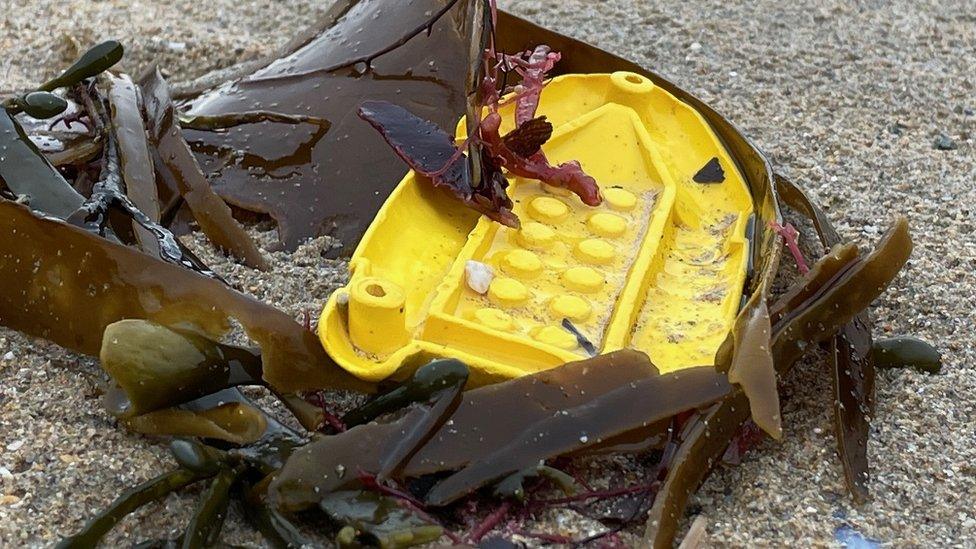
This Lego life raft washed up in north Cornwall earlier in 2023
Tracey Williams who has studied the event and documents finds on Facebook, external, said the fishing industry regularly finds more of the Lego where it sank, 20 miles off the coast.
Different pieces are also now starting to emerge more.
The exhibition in Truro, called Adrift: Lost at sea, was inspired by a book she wrote on the incident, which she described as "part whimsical and part doom-laden".
She told the BBC a "community of thousands" had formed over the years, who she was very grateful to for coming forward with their finds.
Ms Williams said: "For the last 26 years, beach combers have been finding the Lego that floated, but back in the day most of the Lego actually sank to the bottom of the sea bed and has stayed there ever since.
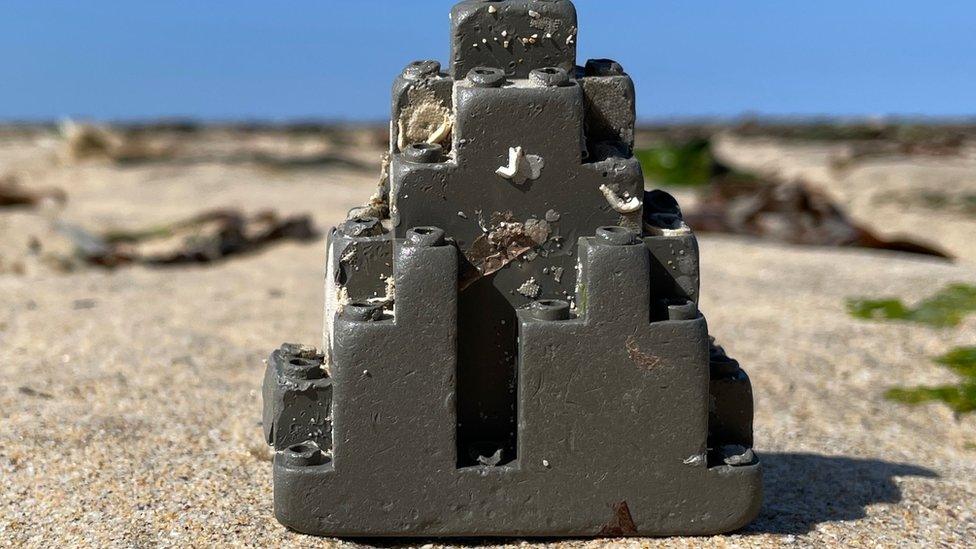
Ms Williams said "ironically" these pieces were designed for Lego 'deep sea reefs' and now more than 7,000 lie on the sea bed
"So the fishermen are still picking it up on a weekly basis... we've got a huge haul."
"They've been in touch with me... they will show me or hand me their latest catch of the day," she said.
She explained that the Lego pieces' fate depended on the materials they were made from, and some have taken many years to be swept along the sea bed, picked up by currents and brought to shore.
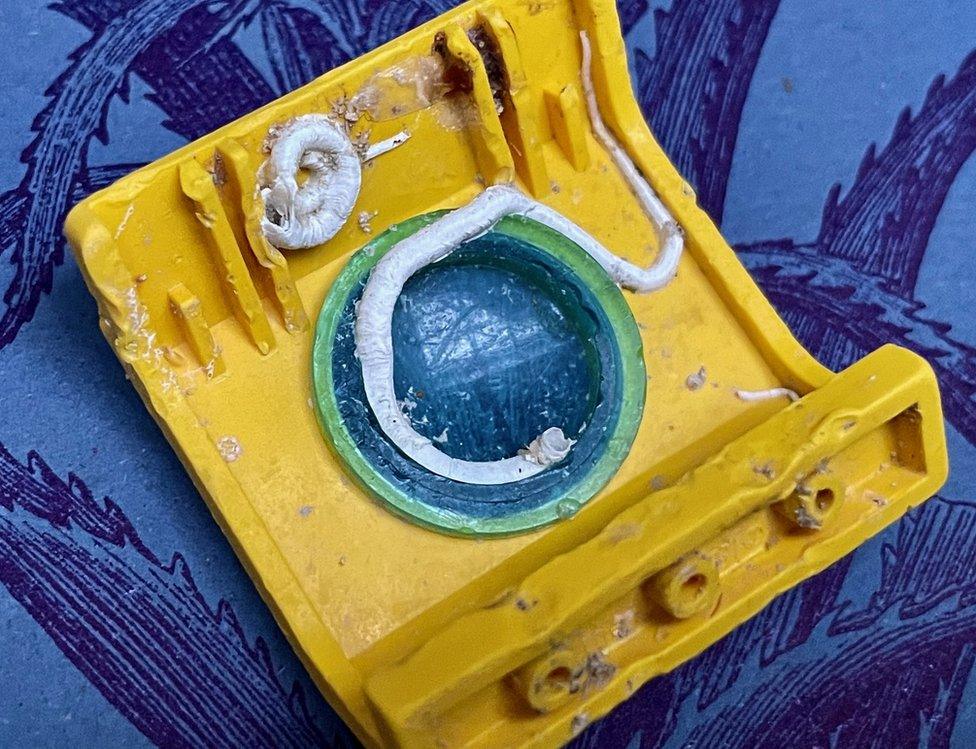
A rarely found Lego submarine porthole was hauled up in a fisherman's net in 2022
Oceanographers are now using the lost Lego to better understand ocean currents.
A study of the pieces by the University of Plymouth, external published in 2020 suggested a Lego brick could survive in the ocean for as many as 1,300 years.
A spokesperson for the Lego Group said they "don't ever want Lego bricks to end up in the sea" and the spill was "an unfortunate accident".
They said: "We are serious about our role in helping to look after the planet and we have a bold sustainability strategy that aims to leave a positive impact for future generations."

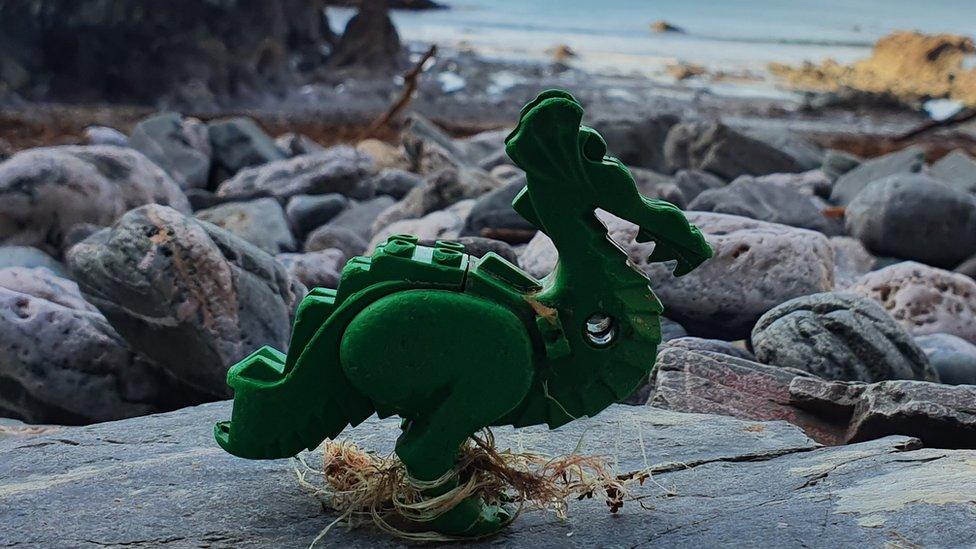
Stuart Redford found a rare green dragon at Whitsand Bay, Cornwall in 2023
Lego pieces lost at sea include:
352,000 pairs of diver fins
97,500 miniature scuba tanks
88,316 sets of tiny flowers
54,000 pieces of seagrass
33,941 dragons - 514 were green
26,600 yellow lifejackets for mini-figures
26,400 pieces of ship's rigging

Ms Williams' Lego Lost at Sea project was awarded Rescue Project of the Year in the Current Archaeology Awards 2023.
Bryony Robins, artistic director of the museum, said: "It's such a captivating story, we've never done an exhibition like this.
"It does really appeal to a lot of the people because obviously children love the Lego story but there's a lot of really hard-hitting stories in there as well for adults who want to read and understand it in a bit more depth."
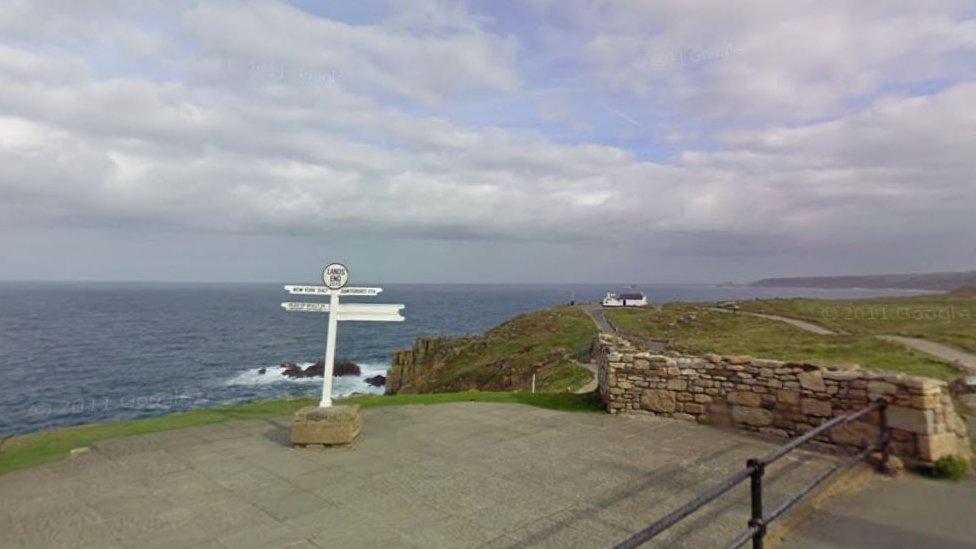
The toy pieces sank 20 miles off the coast of Land's End
She said in conjunction with the display, the museum was providing free activities to inspire children on helping the marine environment, and showing work by artist Rob Arnold, including a sculpture made from plastics found on Cornish beaches.
"It's not just leading people with that sense of climate anxiety, but also offering them a way that they can contribute as well," she said.
The display is open until 23 September.

Follow BBC News South West on Twitter, external, Facebook, external and Instagram, external. Send your story ideas to spotlight@bbc.co.uk
- Published6 May 2018
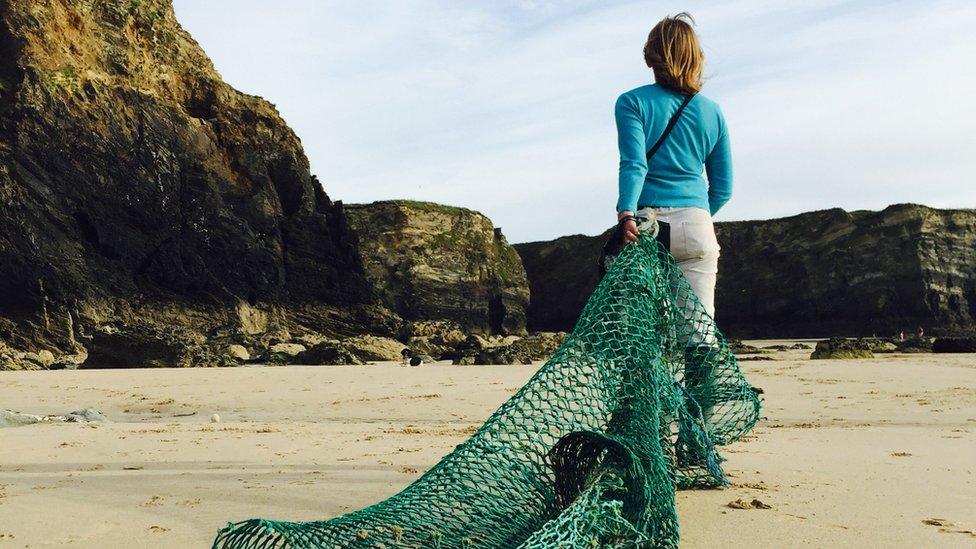
- Published3 January 2015
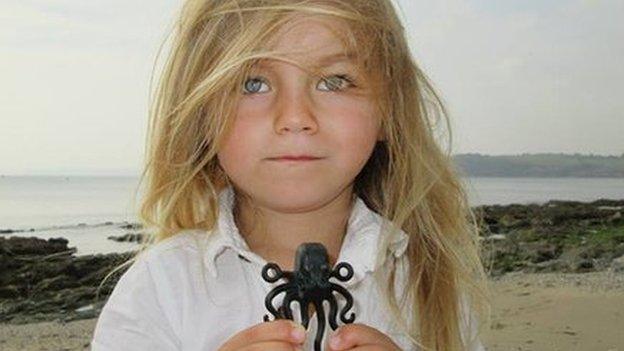
- Published21 July 2014
